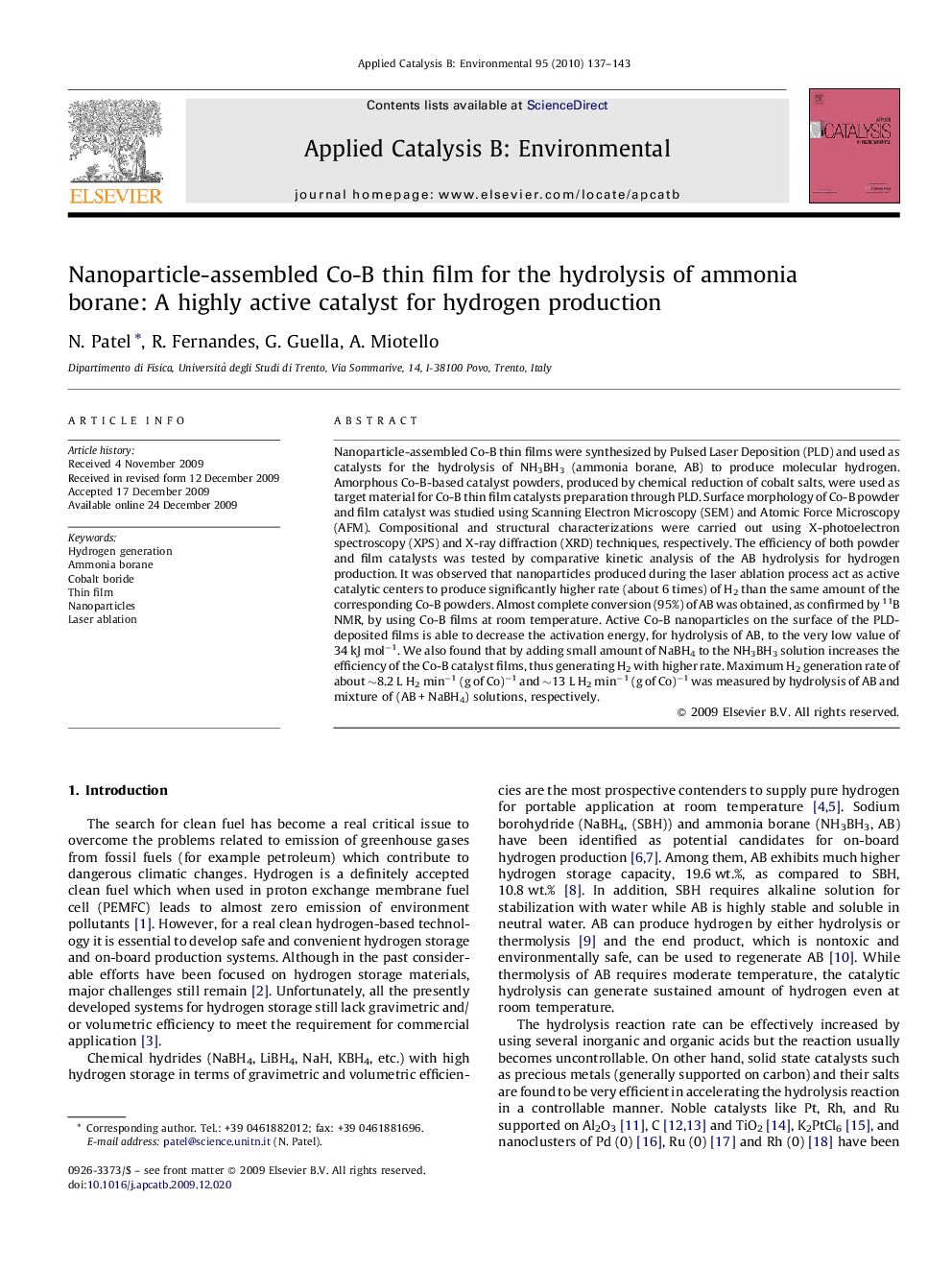| Article ID | Journal | Published Year | Pages | File Type |
|---|---|---|---|---|
| 47548 | Applied Catalysis B: Environmental | 2010 | 7 Pages |
Nanoparticle-assembled Co-B thin films were synthesized by Pulsed Laser Deposition (PLD) and used as catalysts for the hydrolysis of NH3BH3 (ammonia borane, AB) to produce molecular hydrogen. Amorphous Co-B-based catalyst powders, produced by chemical reduction of cobalt salts, were used as target material for Co-B thin film catalysts preparation through PLD. Surface morphology of Co-B powder and film catalyst was studied using Scanning Electron Microscopy (SEM) and Atomic Force Microscopy (AFM). Compositional and structural characterizations were carried out using X-photoelectron spectroscopy (XPS) and X-ray diffraction (XRD) techniques, respectively. The efficiency of both powder and film catalysts was tested by comparative kinetic analysis of the AB hydrolysis for hydrogen production. It was observed that nanoparticles produced during the laser ablation process act as active catalytic centers to produce significantly higher rate (about 6 times) of H2 than the same amount of the corresponding Co-B powders. Almost complete conversion (95%) of AB was obtained, as confirmed by 11B NMR, by using Co-B films at room temperature. Active Co-B nanoparticles on the surface of the PLD-deposited films is able to decrease the activation energy, for hydrolysis of AB, to the very low value of 34 kJ mol−1. We also found that by adding small amount of NaBH4 to the NH3BH3 solution increases the efficiency of the Co-B catalyst films, thus generating H2 with higher rate. Maximum H2 generation rate of about ∼8.2 L H2 min−1 (g of Co)−1 and ∼13 L H2 min−1 (g of Co)−1 was measured by hydrolysis of AB and mixture of (AB + NaBH4) solutions, respectively.
